24. L’eclisse (Michelangelo Antonioni, 1962)
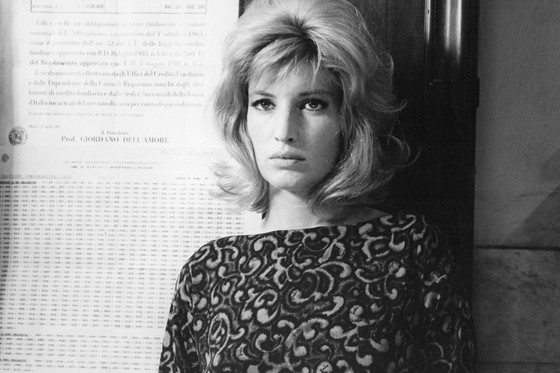
It’s the final part of the trilogy of Antonioni’s series of movies, after “L’Avventura” e “La Notte”, and also “Il Deserto Rosso” is featured as the fourth movie in a four movies series, featuring Monica Vitti as the lead character in three of them. Vitti actually plays a different character with different personalities, but the basis is quite the same in all of the movies. A very insecure and unstable personality dominates her thoughts and feelings, leading to certain doubtful decisions.
“L’eclisse” completely characterizes those features and is considered by many as one of Antonioni’s boldest and courageous releases, exploiting and exposing the inner doubts of an insecure personality with the over-confident and materialistic young man, played by Alain Delon, who portrays a successful stockbroker whose materialistic interests overpower a potential relationship with Vittoria, played by Monica Vitti.
It offers a completely different approach on reality and exploits the potential dangers of a seemingly unstable relationship with two people who are quite different from one another.
25. Divorzio All’italiana (Pietro Germi, 1961)
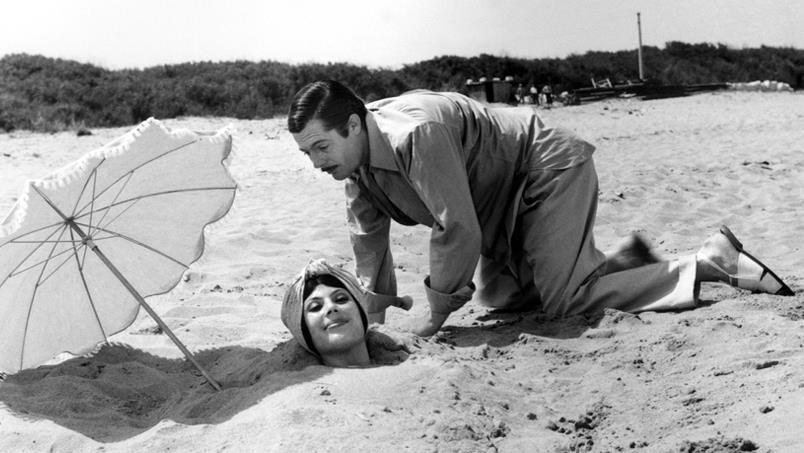
It’s an Academy Award winner and Pietro Germi’s finest release, combining a great storyline with intelligent moments of comedy. The movie itself isn’t filled with physical comedy, sexual innuendo or moments a là Totò, who by himself created humoristic situations, but is more filled with very clever and artistically made camera cuts and an excellent performance by Marcello Mastroianni.
Mastroianni plays Ferdinando Cefalù, a man who is sick of his wife’s love, reaching the point of wanting her to die. He wants to marry Angela, a young woman who is innocent and loves him back. Despite being an aristocrat, Ferdinando only wants Angela and her youth and creates a plan to kill his wife.
Convinced that his plan will work, he starts imagining the trial and how it will work for him; everything is quite optimistic and that by itself creates an excellent humoristic moment. Actually, Ferdinando’s lunacy and eccentricity is sometimes symbolized by his body twitches that Mastroianni brilliantly executes in the movie.
Despite it being released in 1961, the movie is quite different from the comedies usually made at the time. It strongly supports its moments in Mastroianni’s performance and his character’s embarrassing plan and execution.
26. Ossessione (Luchino Visconti, 1943)
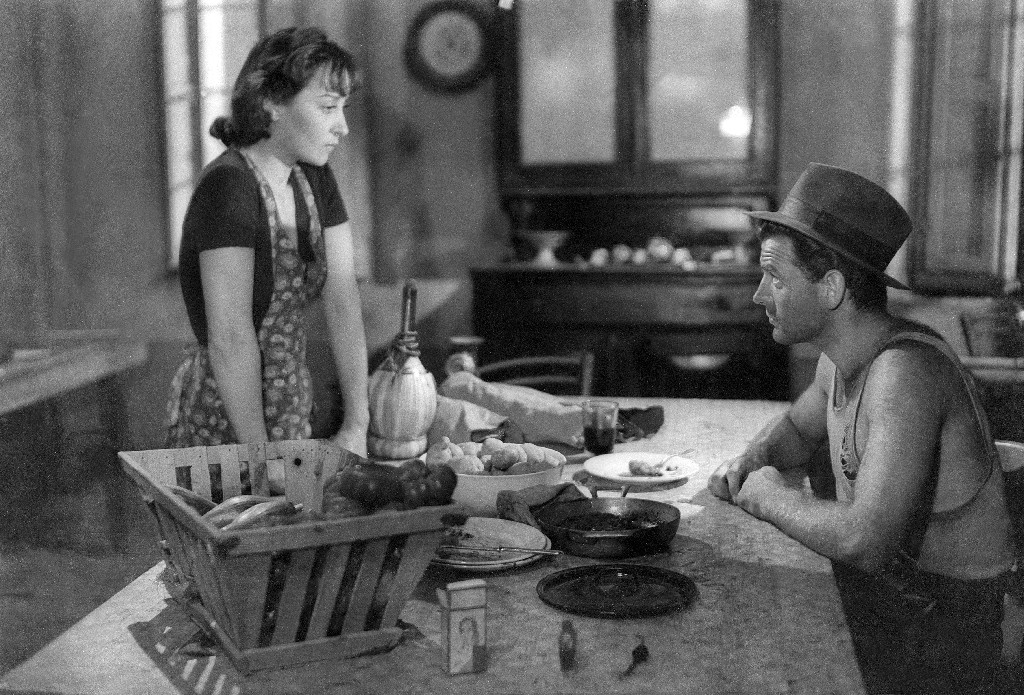
“Ossessione” is considered by many as a pioneer in the realistic style of cinema. It’s a story of love and betrayal, but also of justice, mainly if you consider its ending. It’s one of Visconti’s greatest releases, although Visconti’s filmography is quite rich, pending for a more realistic approach of its characters and plots.
The movie was based on the novel “The Postman Always Rings Twice” by James M. Cain, a novel that had adapted to the big screen multiple times. This adaptation is truly is deserving of the place positioned on the list, despite some performance inaccuracies by the main character of the movie, and the end result is quite effective due to its realism and symbolisms.
It tells the story of a ‘vagabond’ who likes to travel and be free. One day he falls in love with a married woman and the rest is history. The term ‘betrayal’ comes to mind, beginning a series of events that make the vagabond doubt his actions and even consider a return to his old life. The movie title is exact in the beginning of the story, but as the movie progresses, emotions such as regret and desire start to appear.
27. I Mostri (Dino Risi, 1963)
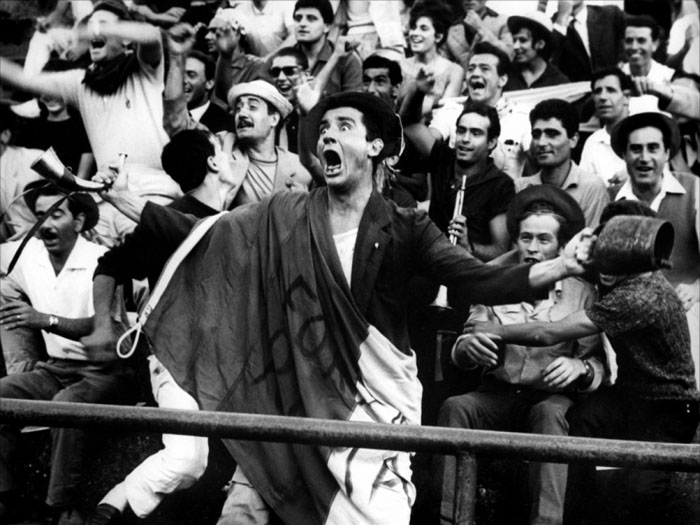
It’s Commedia All’italiana at one of its best moments, giving a clear picture of an Italy in the 1960s, which is evolving into an industrialist and consumerist society. It’s comprised into 20 episodes in which its characters are portrayed in a humoristic way. It’s also a great satirical representation of several sectors of Italy, such as marriage, education, relationships and justice, among others.
The movie mainly stars Vittorio Gassman and Ugo Tognazzi, both entering in 1977’s sequel “Il Nuovi Mostri”, and they deliver incredible and versatile performances, showing why they reached such legendary statuses in their respective careers. It’s perhaps one of the best plots and written movies on this list, thanks to the geniality of its structure and storyline, greatly supported by the extraordinary performances of its main actors.
28. The Leopard (Luchino Visconti, 1963)
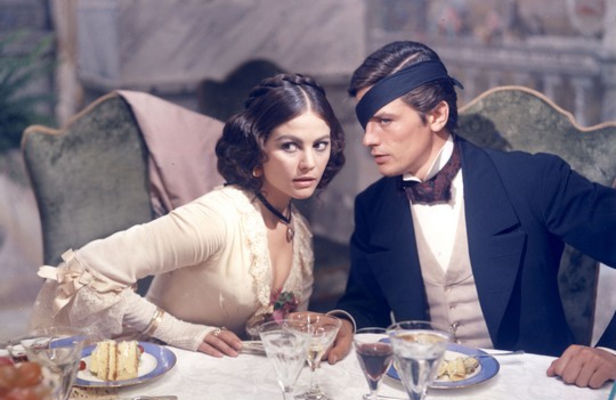
“Il Gattopardo”, as it is titled in Italian, is mostly a historic film from Sicily in the 19th century. The revolutionary forces try to overpower the King’s army and overthrow his regime. The revolutionary forces are led by Giuseppe Garibaldi, who is only mentioned in the movie.
The plot begins when a body of a royalist is found in the garden of the villa of Don Fabrizio Corbera, superbly played by Burt Lancaster. Highly in favor of the King, Don Fabrizio’s family lives in luxury and are almost unaware of the political aftermath. Don Fabrizio’s nephew is one of the rebels, played by Alain Delon, a quite perfect fit for a beautiful, dashing and ‘ladies’ man’ type of character.
Along the way, Don Fabrizio has to cope with the political changes and potential dangers of the rebels’ movements, but also has to deal with the passions and love affairs of his favorite nephew. This is not a fast-paced movie; on the contrary, it’s very slow-paced, and the storyline isn’t full of intrigue or plot twists. The changes in years are quite well done and so are the advances from scene to scene.
I would take some minutes off; there are times where nothing really happens and the plot gets stuck on Alain Delon’s and Lancaster’s acting abilities and their roles in the movie. Still, it’s an amazing historic drama, the only one on the list, and a mandatory movie for those who like historical movies with great presence, with a historic background and performance-enhanced storylines.
29. Amici Miei (Mario Monicelli, 1975)
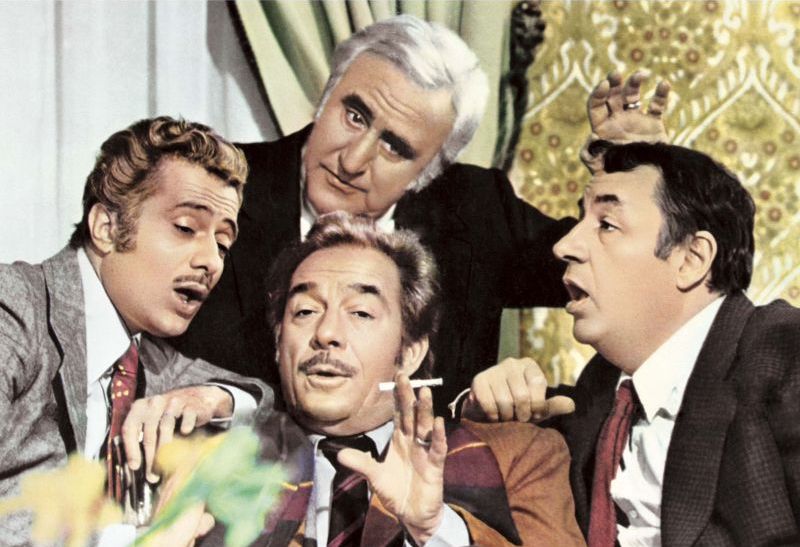
It’s another of Monicelli’s gems and masterpieces that couldn’t be left off of this list. “Amici Miei” is a story of four friends (later in the movie they become five friends), who are a mixture of crazy teenagers and old men bored out of their minds just trying to pass the time.
Although all of them, or almost all of them, are well-positioned in life, they love to play pranks on other people and the greater the pranks are, the better. They call themselves the gypsies; when together they are unpredictable and careless, leaving their personal problems behind.
It digresses from the movies that were mostly being done until that time. All the emotional or dramatic moments shown are very quickly turned into humoristic and comedic scenes, and a great example of that is Count Mascetti’s story.
Also, the reunion of such renowned actors puts the movie in an immediate iconic status, and the fact that they are let loose in this kind of release, directed by the masterful hands of Monicelli’s fantastic vision, makes this movie one of the most influential comedies since 1970.
30. Roma, ore 11 (Giuseppe De Santis, 1952)
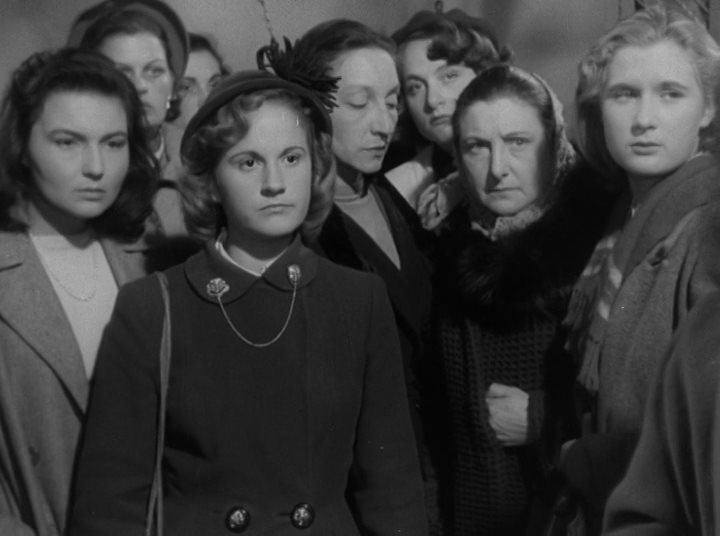
It’s a pioneer in the Neorealist genre and is based on a true event. More than 200 women applied for a job as a secretary in the office of an accountant. The event occurred in Rome and dramatizes the overall desperate feeling and the actions one had to take in order to get a job in post-war Italy.
The movie follows the stories of several candidates since the morning of application and after the accident. An unpredicted number of applicants are waiting for the interviews to begin and they crowd the stairways of the small building where the office is located. The stairway railing gives in, plunging the women; some of them remain injured and one dies. The accident is mainly provoked by one of them, after cutting in line and tricking the interviewer into interviewing her first.
The reason given was that she needed the job badly, beginning a series of angry reactions by the other applicants. The accident is well shot and is quite realistic, transmitting a great sense of realism to the viewer of this true event. The applicants are quite different from each other; they include frustrated aristocrats, prostitutes, servants, and well-positioned daughters.
This shows the difficulty lived by the Italian people in building a life worth living after World War II. The aftermath of the accident is mostly focused on the women victimized by the accident, mainly the woman who might have caused the accident, but also on the investigation of the event itself.
Honorable Mentions: I pugni in tasca (1965), Accattone (1961), Le Amiche (1955), Padre Padrone ( 1977), Django (1966), Il Deserto Rosso (1964), Un Americano a Roma (1954), Salò, or the 120 of Sodom (1975), Napoli Milionaria (1950) and Il Mattatore (1960), among others.
Author Bio: João Braga is a content writer and freelance translator of 5 different languages. His passion for movies began 12 years ago, starting with Bergman, Kurosawa and Truffaut’s movies. He has a “soft spot” for the intelligent and genial French Cinema.